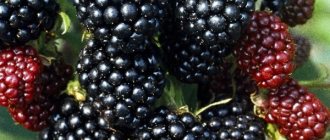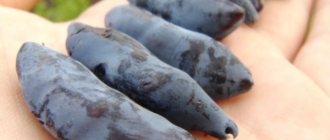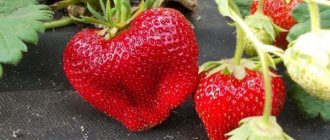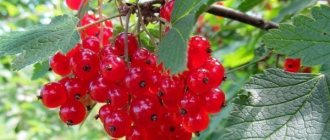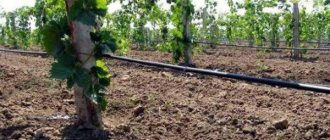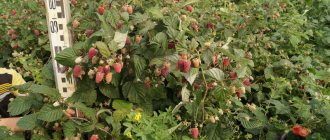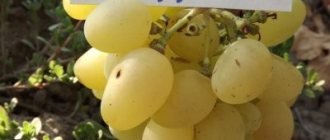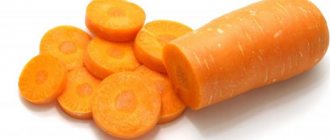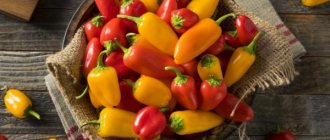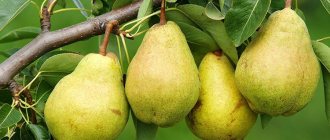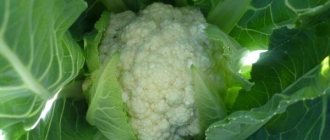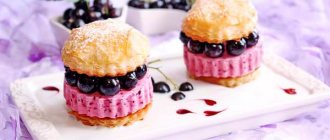Description of the berry crop
The Black Satin blackberry also comes from the Darrow and Thornfree varieties, but it bears little resemblance to the Chester Thornless.
General idea of the variety
The blackberry variety Chester Thornless produces semi-creeping shoots. Their maximum length is 3 m. Although the lashes are strong and thick, they bend well, which makes maintenance much easier. They begin to branch low, and with good agricultural technology the lateral branches can reach 2 m.
Chester Thornless blackberries have a high shoot-forming ability and powerful lashes that are not too long. If desired, they can not be tied to the trellis, but separated in different directions. This way you can form a spreading massive plant from a bush. True, it will be difficult to harvest a bountiful harvest. But thanks to the absence of thorns and the flexibility of the shoots, it is quite possible.
Fruit clusters are also formed low from the ground, which explains the high yield of the Chester Thornless blackberry variety. The dark green leaves are trifoliate. The root system is branched and powerful.
Berries
The variety produces large pink flowers, mostly with five petals. Chester Thornless blackberries cannot be called gigantic; their weight ranges from 5-8 g. But the variety is classified as large-fruited.
Reference! For garden blackberries, the average berry weight is 3-5 g.
The fruit branches of the Chester Thornless variety are erect. It is noteworthy that fewer berries are formed at the ends of the shoots. The largest number of fruits are collected at the base of the bush. The shoots from last year are productive.
The fruits are almost perfectly oval in shape, blue-black, beautiful, mostly one-dimensional. The taste of Chester Thornless blackberries is good, sweet, with a noticeable but not strong sourness. The fruit aroma is average.
Domestic ratings praised the taste of the berries. Reviews from gardeners about Chester Thornless blackberries are mostly positive. Stingy with their assessments, Russian and Ukrainian tasters rated the variety a solid four independently of each other.
But the main advantage of Chester Thornless blackberries is their high fruit density. They are well transported and retain commercial quality for a long time. This, coupled with its good taste, has made growing Chester Thornless blackberries profitable for large and small farmers.
Description and characteristics of Chester blackberries, planting and care
The high yield, pulp density and exceptional frost resistance of Chester blackberries make the crop attractive to both amateur gardeners and agricultural producers.
History of Chester blackberry breeding
In 1985, American breeders at the Beltsville Research Center created another blackberry variety, named Chester Thornless (thornless), by cross-pollinating the semi-creeping variety Thornphy and the erect Darrow.
Description of the variety and brief characteristics
Chester differs from other non-thorny varieties in its winter hardiness (down to -30°C), drought resistance, and high resistance to diseases and pests. The culture requires a garter, but if desired, they form a bush, directing the branches in different directions without support.
Bush dimensions
The flexible, powerful lashes of the Chester blackberry develop quickly, growing up to three meters in length. A bushy, semi-creeping crop branches from buds located closer to the root. Fruiting shoots are erect.
Trifoliate dark green leaves with jagged edges are elongated towards the ends.
A powerful, lush bush with drooping tops not only supplies vitamin products, but also performs a decorative function, fitting into the landscape design of the garden.
Flowering and fruiting
Chester blackberry flowers, white and pink with five large petals, collected in clusters of inflorescences, bloom in June. The medium-late fruiting crop is self-fertile and does not require planting pollinators. The activity of bees and wind is sufficient for the formation of ovaries.
Extended ripening of berries continues from August to September. In the southern regions, the fruits become technically ripe in the second half of July.
Due to a shorter harvest time than other varieties, Chester blackberries do not go into winter with green berries in any growing region.
Productivity per bush – 10 kg. Under favorable growing conditions and compliance with agricultural technology, up to 20 kg can be obtained.
There are many more berries on the lower part of the bush than on the middle, top part. Black fruits with a purple tint weighing up to 8 g grow up to 3 cm. The average weight of the berry is 4 g. The dense, refreshing pulp retains the shape of the fruit during long-term transportation and storage.
Winter hardiness and drought resistance
The Chester variety is one of the most frost-resistant thornless varieties. Withstands temperatures down to -30°C. But in central Russia it does not winter on a trellis and requires insulation. The drought resistance of the plant does not cancel out abundant watering, especially during the period of fruit formation.
Immunity to diseases
High, artificially built-in immune protection protects the crop from typical diseases and pests of Rosaceae. Immunity to fungi and rare damage to plants by parasitic insects does not exempt summer residents from preventive work, spraying bushes with chemicals and folk remedies.
Gardeners include the following disadvantages of Chester blackberries:
- mandatory removal from supports and insulation of Chester blackberry vines in central Russia and to the north.
- heterogeneity of fruits with a bountiful harvest;
- demands on moisture and lighting.
The bushiness of the crop in the lower part of the plant makes it difficult to prepare for winter and insulate it.
Landing
The health of blackberry bushes, the volume and quality of the future harvest depend on compliance with the deadlines, scheme, and planting method.
Layout diagrams and dimensions of the landing pit
During mass plantings on farms, Chester blackberry seedlings are placed at a 1.5-meter distance from each other. For ease of servicing bushes, amateur gardeners adhere to a more sparse pattern—they maintain a distance of 2–3 m between plants and rows.
A planting pit half a meter wide and deep is prepared in advance. The arable layer is mixed with a bucket of compost, humus, manure (preferably horse manure). Mineral fertilizers are added to the mixture - 50 g of potassium sulfate, 100 g of superphosphate.
Timing and technology
The Chester variety is planted in the fall in the southern regions (September–October). In the spring, before the start of sap flow, at an air temperature of 10–12°C, the crop is planted in areas with cold and temperate climates.
Chester blackberry planting method:
- a seedling pre-soaked in a root formation stimulator is lowered onto a raised platform built in a pit;
- multidirectional, woven roots are straightened along the slopes of the tubercle;
- the plant is covered with the prepared substrate;
- compact the soil on top and water it;
- mulch.
After planting is completed, the growth point should be in the ground 2 cm below the surface.
Specifics of care
Although the Chester blackberry variety is not a capricious variety, there are care nuances that require attention. To get tasty, large fruits, you need to know the rules of irrigation, what fertilizers to apply to the crop and in what volume. Follow the recommendations for processing and sheltering bushes for the winter.
Watering and fertilizing
Seedlings require abundant watering 3 times a week for the first 45 days after planting and in dry summers in a volume of 10 liters. Fruit-bearing Chester blackberries require weekly irrigation during the growth period of the bush (5 buckets each). In the interval between the beginning of fruit set and when they reach technical ripeness, the crop is moistened twice a week, pouring 30 liters of water under each bush.
Every 3 years, 5 kg of compost, leaf humus with the addition of 100 g of superphosphate, 30 g of ammonium nitrate, and potassium fertilizers are added to an adult plant. If there is no organic matter, use nitroammophoska.
An excess of microelements, as well as their deficiency, is harmful to the culture. Sometimes, in addition to applying basic fertilizers, mulch from peat, sawdust, and rotted manure is enough for bushes to fully develop.
During the period of fruit ripening, the bushes are watered with an infusion of bird droppings, nettles, and mullein. In autumn, the crop requires potassium fertilizers.
Every year after harvesting, the fruit-bearing branches are cut out. The shoots that have grown this year are thinned out, leaving 5–6 of the most powerful ones.
In the spring, after removing the covering material, check how the blackberries survived the winter. Broken, frozen canes and those with dried tops are removed.
Loosening and mulching the soil
It is recommended to loosen the soil after watering and during weeding. Loosening not only increases access to oxygen and moisture to the rhizome, but also activates the nutrition of the blackberry.
Mulching with peat, humus, sawdust, and straw makes caring for bushes easier.
Mulching results:
- the soil warms up faster, stimulating the development of shoots, accelerating the ripening of fruits;
- the quantity and intensity of irrigation is reduced;
- organic substances during irrigation and digging soil are an additional source of useful microelements.
Mulch is used as insulating material during the cold season.
Disease Prevention
To prevent rot, spotting and insect attacks during the season, agrotechnical work is performed:
- contribute microelements necessary for the culture:
- follow recommendations for soil moisture;
- make bush-lightening prunings;
- clear areas under bushes and between rows from biological debris.
In autumn, the soil is watered with Aktara disinfectant solution. In early spring and after fruiting, the vines are sprayed with Bordeaux mixture and copper sulfate. The insecticidal properties of garlic and onions planted nearby have been proven.
The drug Antikhrushch helps against insects that harm the root system.
Reviews about the variety
Farmers and summer residents like Chester blackberries because they are highly productive and not picky about weather conditions. Users especially highlight the frost resistance of the crop, the ability to grow the plant in the long frosty winters of Siberia.
Marina Danilovna, 45 years old, Voronezh
Knowing how much space blackberries take up at the dacha, I hesitated for a long time to plant the crop. A neighbor helped. Gave me a seedling of the Chester variety. One bush is more than enough. The plant produces so many berries that the leaves are lost against their background.
Vasily Mikhailovich, 62 years old, Ivanovo
I spent a long time choosing a winter-hardy variety of blackberries so that I could not remove them from the trellis for the winter. I bought a Chester, and a friend said that in central Russia, the culture on a support does not survive in the spring.
Lyubov Glebovna, 39 years old, Vologda
This is my fourth year growing Chester blackberries. The berry is a bit sour for my taste. But the jam and compotes turn out wonderful.
- Ask a Question
- Choose a tomato variety
- Choose a variety of cucumbers
- Lunar calendar 2020
Source: https://MoeFermerstvo.ru/ezhevika/chester
Characteristic
In all respects, the Chester Thornless blackberry variety is excellent for growing as an industrial crop.
Main advantages
The Chester Thornless variety is superior to other blackberries in frost resistance. It is able to withstand temperatures down to -30⁰ C. Drought resistance is also at the level. But we should not forget that blackberry culture is moisture-loving in general.
The berries of the Chester Thornless variety are dense, tolerate transportation well and look great on the counter:
- they are beautiful;
- the fruits do not flow, do not wrinkle, and keep their shape well during storage;
- large enough to attract attention, but not so huge as to create the impression that there are only a few berries in a basket or plastic box.
Growing Chester Thornless blackberries is less hassle than other varieties. This is due to the fact that, although it is desirable to shorten and tie up shoots, it is not necessary.
The soil composition requirements for Chester Thornless are the same as for other varieties. The shoots are devoid of thorns along their entire length.
Flowering period and ripening time
Flowering in the central zone occurs in June. The berries ripen by early August, which is considered a mid-late fruiting period. In almost all regions they manage to ripen before frost. This is due to the fact that the harvest time for Chester Thornless blackberries is less extended than other varieties, starting in early August and lasting about a month.
Comment! In the southern regions, flowering and fruiting occur earlier.
Yield indicators, fruiting dates
The Chester Thornless variety is a fast-growing variety. It gives a full harvest in the third year after planting.
The average yield of the Chester Thornless blackberry variety is 10-15, and with good agricultural technology - up to 20 kg of berries per bush. Industrial plantations produce up to 30 t/ha.
Fruiting in the south begins at the end of July, in other regions - in August and lasts 3-4 weeks.
Area of application of berries
Chester Thornless blackberries are consumed fresh and sent for processing. Their taste and aroma are better than most industrial varieties.
Resistance to diseases and pests
Chester Thornless blackberries are resistant to pests, diseases and other negative factors. This does not replace preventive treatments.
Advantages and disadvantages
If we consider the characteristics of Chester Thornless blackberries as an industrial crop, they may seem ideal:
- Good berry taste.
- High transportability and keeping quality of fruits.
- Processed products are tasty.
- High yield.
- Good shoot-forming ability.
- The lashes are easy to bend, which makes it easier to lift onto a support and prepare for winter.
- The shoots are devoid of thorns along their entire length.
- High tolerance to heat and drought.
- It is not necessary to shorten the lateral branching of the variety.
- High resistance to diseases and pests.
- Short fruiting – 3-4 weeks.
- The Chester Thornless variety is one of the most frost-resistant.
But this blackberry is still not ideal:
- The berry taste is good, but not great.
- The fruits in the cluster may not be one-dimensional.
- Due to its low branching, the Chester Thornless variety is difficult to cover for the winter. It is not recommended to trim the side shoots located near the ground - this is where most of the crop is formed.
- The variety still needs to be covered.
Harvesting and transportation, keeping quality
The harvest of berries of this variety begins on the 10th of August and lasts for 4–5 weeks. The berries tolerate transportation well. They can be stored in a cool room or refrigerator for several weeks. Deep freezing extends the shelf life for a longer period.
According to many reviews from gardeners, many people really like the Chester Thornless blackberry variety. It is grown for its good yield, lack of thorns and delicious aromatic berries. We wish everyone success in gardening and gardening!
Reproduction methods
Chester Thornless blackberries have shoots that first grow upward and then droop. The variety is easy to propagate by rooting layering or pulping.
Reference! When pulping, first cut off the top of the shoot above the bud, and when several thin branches grow from it, add droplets.
The variety propagates well by green or root cuttings or by dividing the bush.
Blackberry variety Chester (Chester Thornless): description, photos, reviews, secrets of planting and care
Many varieties of blackberries and other berry crops are bred for the purpose of cultivating them on an industrial scale. Commercial varieties include the Chester Thornless variety.
This new product is considered one of the most promising due to its enormous potential: each bush produces 2-3 thousand! flower buds, which, with proper care, can turn into 20 or more kg. berries
The excellent indicators of the assortment did not go unnoticed by summer residents; due to more careful care for each bush, gardeners get even better results than farmers.
Description of the variety
Chester blackberries were obtained at the Beltsville Research Institute (USA) in 1985 by crossing popular varieties: Darrow and Thornfree.
The bush of the plant is characterized by a semi-creeping shape and abundant branching, starting from the lower buds. This allows the plant to form fruitful clusters in large quantities. The shoots are long, growing up to 2-3 meters, but do not need pinching. The variety has other features:
- Giant bushes produce large side shoots that grow in width.
- The flowers are pink and large; they, one might say, “envelop” the bush. Flowering itself occurs in June, fruiting in early August.
- Dark blue berries form a cluster and ripen together, but not at the same time.
- The berry is sweet with a delicate aroma and slight sourness. It is distinguished by easy assembly and good transportability. The berries are easy to pack and transport due to their density.
- The blackberry bush begins to actively bear fruit in the 3rd year. As they grow older, the number of berries increases.
- Fruit branches are erect. The largest number of berries ripen on the lower branches; fruiting is not abundant on the upper ones.
- The berry has an average weight: 5-7 g (maximum 7-9 g), but for the industrial variety these are the most convenient sizes: the container is filled completely and the berries do not wrinkle.
- The Chester variety has high winter hardiness and can withstand temperatures down to -30 C.
When growing a variety, trellises are required. Chester bushes are semi-creeping; without support, the tops of the shoots will simply lie on the ground. Either single-strip supports are used, when three rows of wire are stretched at different heights, or T-shaped trellises.
The Chester variety has no thorns on its branches, which makes the harvesting procedure convenient and painless.
Brief description (pros, cons)
Chester blackberry, like any other cultivated plant, has its positive and negative sides.
Advantages of the variety
- very high yield (up to 20 kg per bush, up to 30 tons/ha);
- undemanding and easy to collect fruits due to the absence of thorns;
- berries with a sour taste, often used in dietary nutrition;
- easy transportation over long distances due to the high density of berries;
- the plant is decorative and can be used as a hedge;
- compact fruiting period (3-4 weeks);
- high resistance to heat and drought.
Disadvantages of the variety
- fruits in clusters of different sizes: from large to very small;
- shoots branching at the base create difficulties when covering for the winter and forming a bush;
- does not tolerate shade and long rainy periods.
There are no problems when cultivating the Chester variety in the southern regions.
Lots of light, warmth, fertile soils - a set of conditions that allow you to get high yields. In addition, there is no need to think about shelter for the winter. Northerners will have a more difficult time.
Care activities will require time and effort, but even in the conditions of the Urals and Siberia, Chester is grown and shows very good results.
Watering
The Chester variety bush is drought-resistant and can withstand short periods of lack of moisture, but with regular watering the yield increases significantly. After watering, the soil is loosened and mulched (on acidic soils it is better with rotted manure, on alkaline soils - with peat). This way moisture is retained for a long time, and the plant does not suffer from its lack.
To prevent chlorosis, foliar feeding of blackberries with a chelate complex is carried out at least once a year.
Frequency of watering in the southern regions: once a week, in the northern regions - depending on the weather, but not more than once every 7-10 days.
Trimming
Chester blackberries are pruned starting from the second year. In the fall, the shoots of the second year, on which the harvest was formed, are removed, the first-year ones are left, but not all. Each bush is formed from 6-8 of the strongest shoots, all other shoots are removed or used for propagation.
Sick, dried out, broken blackberry branches are removed in the spring. Sometimes, when laying canes in winter tunnels, it is necessary to cut off the lower side branches, which do not make it possible to “pack” the bush well.
Top dressing
Blackberries of the Chester variety are responsive to fertilizing, especially if they are not given the most fertile area of soil. During the growing season, several feedings are carried out:
- in the spring, nitrogen fertilizers are applied so that the blackberries quickly gain green mass;
- during the fruiting period, phosphorus-potassium components are important for the active formation of berries;
- In autumn, potassium monophosphate is used.
Organic compounds and mixtures are used as needed up to 3 times per season. Mullein solution (1:10) or herbal infusion (1:4) is perfect.
The Chester variety is responsive to foliar feeding. The leaves quickly absorb useful substances and in case of damage to the root system or diseases, this is an ideal way to help the shrub “get into shape.”
When spraying, complex fertilizers or individual microelements (zinc, manganese, boron and others) are applied.
Treatment against diseases and pests
Chester blackberries are susceptible to diseases:
- Verticillium wilt. It is expressed in yellowing and curling of leaves. The disease is caused by a fungus that can quickly spread throughout the bush. The infected plant is uprooted, and neighboring ones are fumigated with smoke.
- Gray rot. When air humidity is high, a gray coating forms on the leaves. For protection, preventive dusting of bushes with ash is carried out regularly.
- Anthracnose. The leaves are covered with purple spots with a red border. When infected, the plant is treated with colloidal sulfur.
Blackberries are attacked by weevils, raspberry beetles, and shoot aphids. They significantly weaken the shoots and the yield drops. A mechanical method is used against weevils and raspberry beetles: shaking them onto a cloth in the morning. Spraying with solutions of garlic and laundry soap helps. For shoot aphids, fumigation with tobacco smoke is used.
Reproduction
Semi-cresting forms of blackberry have two methods of reproduction: by rooting layering and by apical shoots. When using the first option in the spring, the lower branches are bent to the ground, pinned and covered with soil. By autumn, roots appear at the point of contact with the ground. The cuttings are separated from the mother plant and planted in a “school”.
Second option: apical shoots up to 10-15 cm in size are cut with sharp pruning shears and in the spring they are planted in boxes with special soil (humus and sand (1:1).
Planting is carried out obliquely (angle 45 degrees) and the box is covered with film to maintain high humidity. To help the shoots take root better, they are placed in partial shade.
In the fall, if they are well rooted, they can be planted in open ground for growing or immediately to a permanent place.
Landing rules
The Chester Thornless variety is planted in the same way as other blackberries.
Recommended timing
In the northern regions and the central zone, it is recommended to plant blackberries in the spring, when the soil warms up. Then the plant will have time to take root well and get stronger before the onset of frost. In the south, all varieties, including Chester Thornless, are planted in early autumn, when the heat subsides.
Choosing a suitable location
The Chester Thornless blackberry variety will grow and fruit in partial shade. But such a landing is permissible only in the south. In other regions, if there is a lack of sunlight, the harvest will be poor, the berries will be small and sour. Some of them will not have time to ripen before frost.
The soil needs to be slightly acidic, loose, fertile. Light loams are best suited. Carbonate (sandy) soils are not suitable.
Groundwater should not come closer than a meter to the ground surface.
Soil preparation
Holes for planting blackberries are dug in 2 weeks. Their standard size is 50x50x50 cm. The top fertile layer of soil is mixed with a bucket of humus, 120-150 g of superphosphate and 50 g of potash fertilizers. The soil is improved:
- excessively sour - with lime;
- neutral or alkaline - red (high-moor) peat;
- dense - sand;
- carbonate - with additional doses of organic matter.
The planting hole is filled 2/3 with fertile soil and filled with water.
Selection and preparation of seedlings
Chester Thornless blackberries are not that uncommon in nurseries and organizations selling planting material; the variety is not difficult to find. But it is better to buy young plants from reliable partners.
First of all, you should pay attention to the roots - they should be well developed, without damage, smell like earth, and not like mold or a cesspool.
Smooth, even bark without cracks or folds is a sign of healthy blackberries.
Important! If you notice thorns on a seedling, it means you have been deceived with the variety.
Algorithm and landing scheme
On industrial plantations, the distance between Chester Thornless blackberry seedlings is 1.2-1.5 m, in private gardens - from 2.5 to 3 m, row spacing - at least 3 m. If you want to grow the variety as a free-standing powerful bush, under a large area is left behind. But it will be more of a decorative plant than a fruit-bearing plant - it is inconvenient to harvest the fruit inside.
Planting is carried out in the following sequence:
- A mound is made in the center of the pit, around which blackberry roots are spread.
- They fall asleep, constantly compacting the soil. The root collar should be located 1.5-2.0 cm below the surface.
- The seedling is watered with a bucket of water.
- The soil is mulched.
Blackberry diseases Chester Thornless
Chester Thornless blackberries are susceptible to diseases such as verticillium, gray mold, and anthracnose.
Verticillium wilt (Verticillium wilt) is a fungal disease that affects the plant's vascular system. The first signs of the disease, which often appear already during the growing season, are yellow and curling lower leaves. The diseased plant should be destroyed, and the bushes adjacent to it should be fumigated with smoke.
Gray rot affects blackberry bushes during periods of prolonged rain or strong dense fogs. The setting and ripening berries are covered with a gray coating. To prevent the disease, it is necessary to plant blackberry beds in open, well-ventilated places. When blackberry bushes are affected by gray rot, the soil around the bushes is covered with a 3–5 cm layer of ash or pine needles. In late autumn or early spring, blackberry beds are treated with potassium nitrate (100 g of the substance per 1 bucket of water).
Anthracnose attacks blackberry bushes in late May - early June. The leaves of the plant become covered with purple spots, which gradually acquire a reddish border and spread to the stems. Light brown stems become covered with gray spots with a red border and die. Experienced gardeners advise adding peat manure compost to fertilizers and promptly destroying weeds in the rows of the blackberry bed. On warm days (+16 degrees) you can spray the bushes with colloidal sulfur. 20–30 g of the drug are diluted in 10 liters of water until a homogeneous suspension is obtained. Treatment should be carried out in calm weather during the growing season of the plant (before the flowering period).
Photo gallery: blackberry diseases Chester Thornless
Verticillium is a fungal disease that manifests itself as loss of elasticity and wilting of shoots
Anthracnose mainly affects leaves, less often young shoots and blackberries.
Mandatory conditions for the development of gray rot are high air humidity and stagnation of air masses around the plant.
Subsequent care of the crop
The planting is completed, and caring for the Chester Thornless blackberry begins with abundant watering of the bush. The soil should not dry out completely until the plant takes root.
Growing principles
Chester Thornless blackberries are remarkable in that they can be grown as a large bush without staking. This is due to the natural length of the main shoots - up to 3 m. But such blackberries will decorate the garden. It will be difficult to collect berries hidden inside the bush.
So it is better to tie Chester Thornless blackberries to a multi-row or T-shaped support up to 2 m high. For convenience, fruiting shoots are fixed on one side, young shoots on the other.
Necessary activities
Although the variety is drought-resistant, in the south, in hot weather, blackberries are watered once a week. In regions with cool summers - as necessary - the soil under the plant should not dry out; the crop is moisture-loving. To reduce watering, mulch the soil.
Loosening is best done at the beginning and end of the season. The rest of the time it will be replaced by mulching: on acidic soils - with humus, on alkaline soils - with high-moor peat.
The Chester Thornless variety produces a large harvest, despite the relatively short shoots. It needs to be fed intensively. If the soil was well-dressed before planting, fertilizing the blackberries begins a year later.
In the spring, nitrogen is added, at the beginning of flowering - a mineral complex without chlorine. During the ripening period, blackberries are given a solution of mullein infusion (1:10) or green fertilizer (1:4). Foliar feeding with the addition of a chelate complex will be beneficial. In autumn, blackberries are fed with potassium monophosphate.
Shrub pruning
After fruiting, the old branches are cut out at ground level. In the fall, only broken side shoots and the weakest vines are removed from annual growth - despite high winter hardiness, some of them can be damaged by frost.
In the spring, the branches are normalized. Some gardeners leave 3 shoots. This makes sense if the blackberries will be poorly cared for, for example, in a rarely visited country house. With intensive cultivation, 5-6 vines are left.
You don’t need to pinch the side shoots at all. But this will complicate care, and the need for feeding will increase. Each gardener decides for himself whether to shorten the side shoots as soon as they reach 40 cm.
Comment! The Chester Thornless variety branches well without pinching.
Preparing for winter
After fruiting, which in the northern regions barely has time to end before the onset of frost, and pruning of old shoots, the young shoots are removed from the support, tied and covered for the winter. To do this, use spruce branches, straw, agor fiber or spandbond, and dry soil. It’s even better to build special tunnels.
Although the shoots of the Chester Thornless blackberry bend well, lateral branching begins quite close to the base of the bush. This complicates the covering procedure, but it is at the bottom that most fruit clusters are formed.
Important! Residents of the southern regions! Although the Chester Thornless variety is one of the most frost-resistant, winter shelter cannot be neglected!
Advantages of the variety
This thornless hybrid gained its popularity due to the following advantages:
- high yield (late flowering eliminates the slightest possibility of flower buds and inflorescences freezing);
- resistance to drought and frost;
- good transportability due to the dense pulp of the berries.
Among the disadvantages, it is worth noting that blackberries are not suitable for growing in shady areas; however, most crops cannot boast of this either. Bushes also need shelter if they grow in northern regions, where winter temperatures drop below 30 degrees below zero.
Possible diseases and their treatment
The Chester Thornless variety has strong immunity and is rarely exposed to diseases and pests. As a rule, problems arise due to improper care or non-compliance with agricultural cultivation techniques. The most dangerous diseases are anthracnose, purple spot, mosaic and curl.
When the first signs of infection are detected, it is necessary to treat the planting with a complex fungicide (Topaz, Fundazol, Topsin M, Bordeaux mixture). In case of massive damage, it is necessary to completely clean the area, followed by the destruction of diseased plants.
